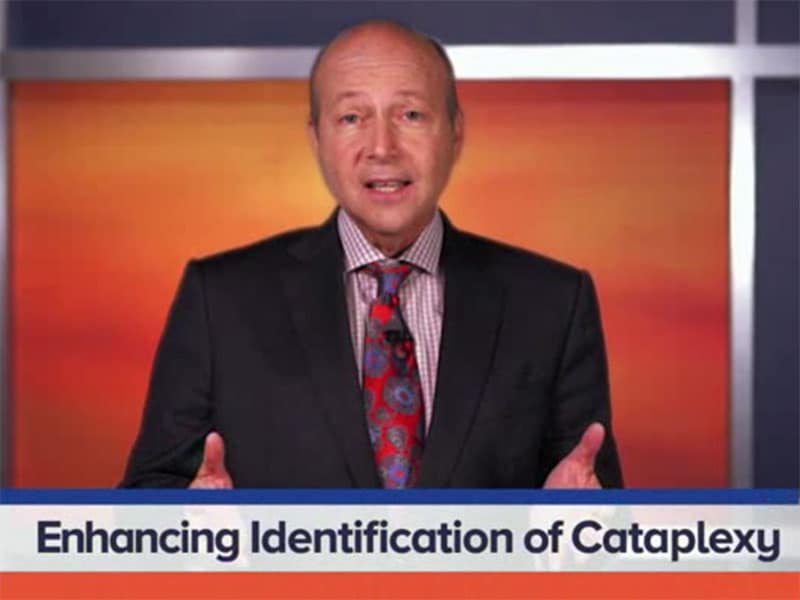

Today, pharmacotherapeutic treatment of cataplexy includes antidepressants, sodium oxybate (gamma hydroxybutyrate), and pitolisant (Table 1). Modification of behavioral habits reduced the frequency of cataplexy in 27.1% (e.g., regular sleep schedule, avoidance of sleep deprivation). In 12.5%, a reduction of severity was reported (cataplexy changing from complete/generalized to partial). When treated, 97.9% reported a reduced frequency of cataplexy (86.4%). Interestingly in a study with the purpose to characterize cataplexy clinical features with a questionnaire in 109 patients, only 56% of patients with proven cataplexy used medication to control these. Available treatments enhance catecholamine availability or modulate locus coeruleus norepinephrine neuron activity to reduce excessive daytime sleepiness and cataplexy. A compromised hypocretin/orexin signaling obviously plays one of the most important roles in the pathophysiology of cataplexy but compounds targeting specifically to hypocretin/orexin receptors are lacking so far. The treatment response varies between patients and reflects its complex and difficult interaction between the different brain-networks involved in the narcolepsy-cataplexy complex. Till today, the treatment of cataplexy in the context of narcolepsy is a symptomatic therapy. Around the same time with the discovery of tricyclic antidepressants, the combined therapy for narcolepsy with cataplexy consisting of stimulants against sleepiness and the antidepressant imipramine against cataplexy was established.

In this first description, they also introduce methylphenidate as a possible treatment for daytime sleepiness. The “narcoleptic tetrade” as described by the authors refers to the four-element symptom constellation: daytime sleepiness, cataplexy, sleep paralysis, and hypnagogic hallucinations. The finding of an association between excessive daytime sleepiness and the occurrence of emotion-triggered cataplexies was an important step in the understanding of narcolepsy. An interesting neurophysiological study confirmed a reduction of the size of the H reflex in normal people when laughing. Emotionally triggered muscle weakness has even made it into a famous Beatles song (“Honey Pie,” White Album, 1968) reflecting its popularity in the normal population. A “weak in the knees” in situations of high emotional intensity may be experienced in healthy people, probably representing a physiological minor expression of cataplexy. In the beginning of the twentieth century, episodes of muscle weakness caused by emotions were first described and named cataplexy, which is a term from the Greek and consists of the terms kata = down and plessein = beat. New therapeutic actions either targeting the autoimmune mechanisms underlying orexin cell death or substituting orexin action are promising treatments for the near future. Treatment for cataplexy still remains symptomatic but new agents with better tolerability and usability are continuously developed. SummaryĬataplexies still remain an under-recognized phenomenon due to missing diagnostic measures.
#CATAPLEXY TREATMENT DRUGS SERIES#
Abrupt cessation of anticataplectic medication especially antidepressants increase the risk of status cataplecticus, a virtually continuous series of long-lasting cataplectic attacks. In the recent years, with the development of new anticataplectic agents (e.g., Pitolisant) symptomatic treatment of cataplexy has further improved. With the discovery of hypocretin/orexin, the understanding of the pathophysiology of cataplexy advanced in the past decades. This review gives an overview of the current understanding of cataplexy and its available treatment options. doi:10.Cataplexy, an involuntary loss of muscle activity triggered by strong emotions is the most impressive symptom in narcolepsy. The mammalian target of rapamycin (mTOR) kinase mediates haloperidol-induced cataleptic behavior. Ramírez-Jarquín, U.N., Shahani, N., Pryor, W. Haloperidol–induced catalepsy is ameliorated by deep brain stimulation of the inferior colliculus. Adenosine antagonists reverse the cataleptic effects of haloperidol: implications for the treatment of Parkinson's disease. Trevitt J, Vallance C, Harris A, Goode T.

Dopaminergic mechanisms underlying catalepsy, fear and anxiety: do they interact? Behav Brain Res. doi:10.5498/wjp.v6.i4.391Ĭolombo AC, de Oliveira AR, Reimer AE, Brandão ML. Catatonia: Our current understanding of its diagnosis, treatment and pathophysiology.


 0 kommentar(er)
0 kommentar(er)
